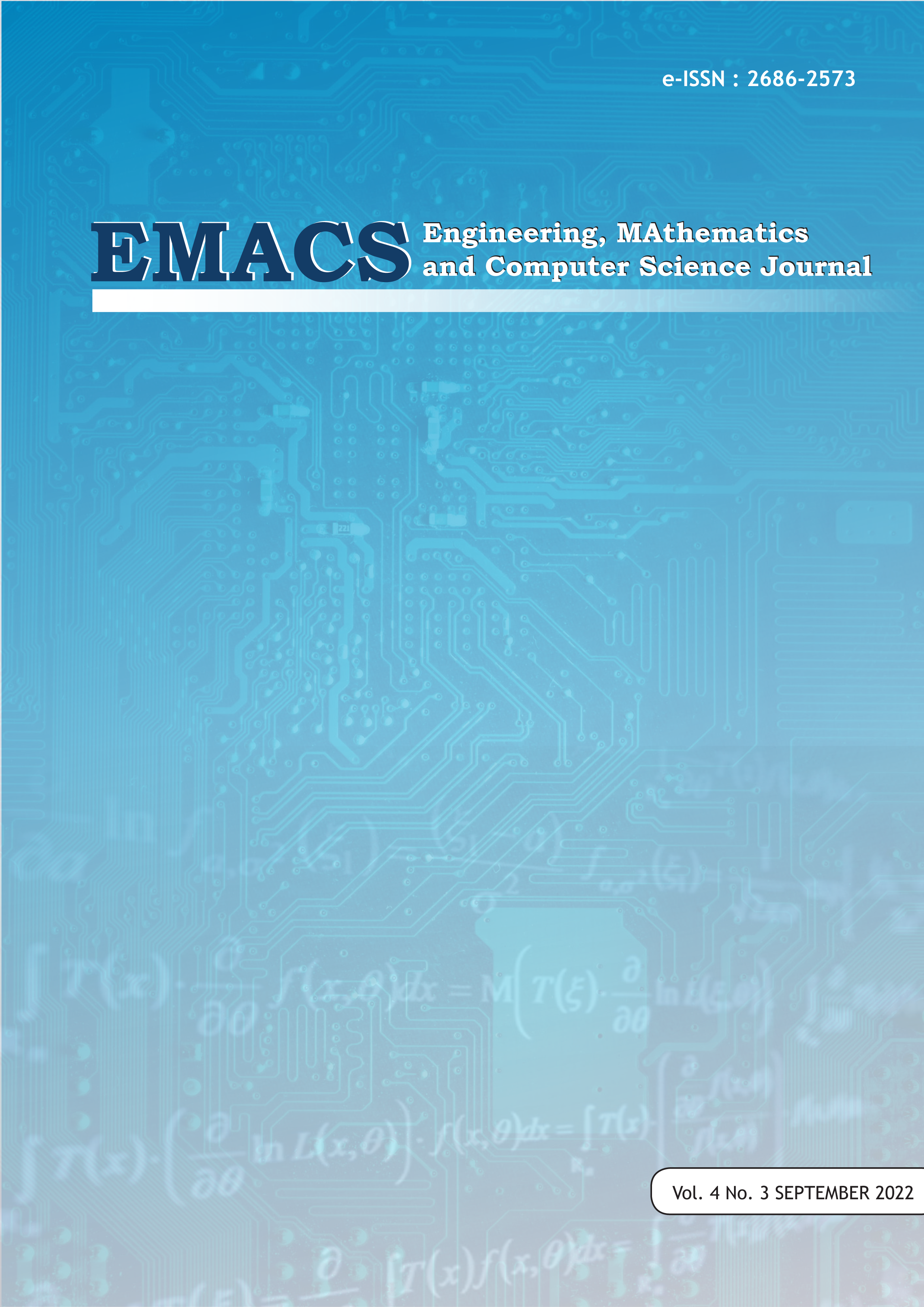Designing IoT-Based Smarthome System With Chatbot
DOI:
https://doi.org/10.21512/emacsjournal.v4i3.8787Keywords:
Internet of Things, Chat Bot, Smart Home System, Mobile ApplicationAbstract
Smart home system aim to maximize surveillance, monitoring, and security. This system is integrated with telecommunications and control systems from the microcontroller to create the Internet of Things (IoT). Nowadays, home appliances are integrated with the Smart System that connected to the internet. On the other hand, messenger applications now integrated with chat bot with Artificial Intelligence to make user easier to communicate. This trend made a possibility to implement a system where a home appliance can be operated by only using a messenger application. In this research, a Smart home system designed with a client-server system based on Raspberry Pi as microcontroller and Telegram Messenger as interface that perform the control communication. The process separated into three stages: design, implementation, and result. The design consists of designing the server, interface, and Smart Home control system. To test the performance, the Messenger Bot are compared with other direct controller application. The result show that the Telegram Messenger application is suitable and more convinient for being the IoT controller.
References
Findawati, Y., Idris, A., Suprianto, Rachmawati, Y., & Suprayitno, E. A. (2020). IoT-Based Smart Home Controller Using NodeMCU Lua V3 Microcontroller and Telegram Chat Application. IOP Conference Series: Materials Science and Engineering, 874(1), 012009. https://doi.org/10.1088/1757-899X/874/1/012009
Irawan, A. W., Yusufianto, A., & Dean, R. (2021). Hasil Survei Internet APJII 2019-2020-Q2. Asosiasi Penyelenggara Jasa Internet Indonesia. https://apjii.or.id/content/read/39/521/Laporan-Survei-Internet-APJII-2019-2020-Q2
Mark Lutz. (2013). Learning Phyton, 5th Edition (O’Reilly Media, Ed.; 5th ed.).
Oktari, N. G. A., Nurdin, A., & Rakhman, A. (2020). Prototype Smart Home Menggunakan Modul Wifi ESP8266 Dengan Aplikasi Telegram. Jurasik (Jurnal Riset Sistem Informasi Dan Teknik Informatika), 5(2), 258. https://doi.org/10.30645/jurasik.v5i2.211
Pertiwi, W. K. (2020, November 10). Penggunaan Internet Indonesia Mendekati 200 juta. Kompas.Com. https://tekno.kompas.com/read/2020/11/10/07160027/pengguna-internet-indonesia-mendekati-angka-200-juta?page=all
Purnawan, P. W., & Rosita, Y. (2019). Rancang Bangun Smart Home System Menggunakan NodeMCU Esp8266 Berbasis Komunikasi Telegram Messenger. Techno.Com, 18(4), 348–360. https://doi.org/10.33633/tc.v18i4.2862
Rukmana, F. I., Akmaliyah, Mulyana, E., Kusnawan, A., Kamelia, L., & Darmalaksana, W. (2020). All-in-One Application For Smart Home System Base on Telegram Controlled. 2020 6th International Conference on Wireless and Telematics (ICWT), 1–4. https://doi.org/10.1109/ICWT50448.2020.9243631
Siswanto, S., Nurhadiyan, T., & Junaedi, M. (2020). PROTOTYPE SMART HOME DENGAN KONSEP IOT (INTERNET OF THING) BERBASIS NODEMCU DAN TELEGRAM. Jurnal Sistem Informasi Dan Informatika (Simika), 3(1), 85–93. https://doi.org/10.47080/simika.v3i1.850
Downloads
Published
How to Cite
Issue
Section
License
Copyright (c) 2022 Engineering, MAthematics and Computer Science (EMACS) Journal

This work is licensed under a Creative Commons Attribution-ShareAlike 4.0 International License.
Authors who publish with this journal agree to the following terms:
- Authors retain copyright and grant the journal right of first publication with the work simultaneously licensed under a Creative Commons Attribution License - Share Alike that allows others to share the work with an acknowledgment of the work's authorship and initial publication in this journal.
- Authors are able to enter into separate, additional contractual arrangements for the non-exclusive distribution of the journal's published version of the work (e.g., post it to an institutional repository or publish it in a book), with an acknowledgment of its initial publication in this journal.
- Authors are permitted and encouraged to post their work online (e.g., in institutional repositories or on their website) prior to and during the submission process, as it can lead to productive exchanges, as well as earlier and greater citation of published work.
USER RIGHTS
All articles published Open Access will be immediately and permanently free for everyone to read and download. We are continuously working with our author communities to select the best choice of license options, currently being defined for this journal as follows: Creative Commons Attribution-Share Alike (CC BY-SA)





